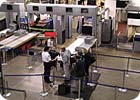
Within the air transport industry, security invokes many different definitions. Basically, “security” is “freedom from danger.” Protecting airline passengers, cargo and data certainly conforms to the definition of security. All of these issues are linked, not only to each other, but also to core business issues that each company faces, which is satisfying customer needs while reducing cost, improving productivity and maintaining a competitive advantage.
Security for air transport is a key industry issue that stretches far and wide. Multiple organizations focus on or touch security for the air transport industry making it difficult for organizations to comply and follow recommendations on security. Plus, managing network and technology resources in today’s technologically driven environment has never been more complex. New players, technologies and operating requirements, intense pressure on costs and heightened security concerns all combine to create significant challenges.

Response to new threats
Many technical solutions have surfaced to help companies address various security threats. For example, the introduction of the firewall became the standard for Internet connections. Soon after, intrusion detection systems (IDS) became the next big wave of standard security technology. However, the huge increase of data on the network system has overwhelmed security and IT operations. It was at this point that many companies realized that optimizing their investment in IDS required regular maintenance, monitoring, metrics, quality control and, of course, experts to perform these functions.
Security is a never-ending endeavor. It becomes difficult to recognize when security procedures need updating or when a change in business processes creates vulnerabilities. Security programs, no matter how protective, need constant supervision, adaptation and updating.
Security should be intricately embedded across the organization – thus any external resources will need to have a keen understanding of your security goals. As a basic example, if a corporation has made the strategic decision to leverage the Internet for customer communications, the delivery of connections provided by Internet service providers should inherently include security that matches the corporate security goals. A failure by a partner to not understand their customer’s security policy could put both the physical and the logical security layers at risk.
A security campaign to raise security assurance levels for airlines, aerospace, airfreight and travel distribution companies should provide better visibility and control of network security through detailed assessments and managed solutions.

Vulnerability management services provides for vulnerability discovery, prioritization, remediation, dynamic protection, verification and customizable reporting, ensuring all critical operational systems are protected from intrusion.
Managed protection services should be designed to improve and maintain compliance with secure data laws across multiple environments, as well as manage access points across a global infrastructure.
Also have an objective benchmark of the security program against industry standards and regulations to determine gaps and provide a comprehensive set of recommendations.
In conclusion, companies need a variety of steps to ensure security: identify security issues within existing programs; help build a culture of security conscience individuals; and ensure there is a balance between security, flexibility and agility.